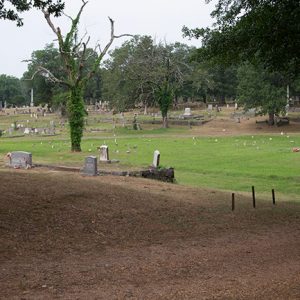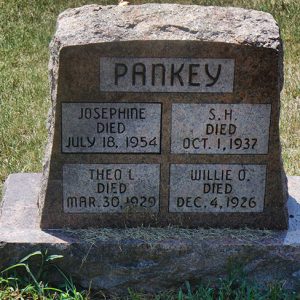calsfoundation@cals.org
Oakland-Fraternal Cemetery
aka: Oakland & Fraternal Historic Cemetery Park
Oakland & Fraternal Historic Cemetery Park was established in 1862 when the City of Little Rock (Pulaski County) purchased a 160-acre estate in order to accommodate the Civil War dead. Through the years, this 160-acre estate has been carved into seven distinct cemeteries: Oakland, National, an eleven-acre Confederate, a one-acre Confederate, Fraternal, Oakland Jewish, and Agudath Achim. Today, 108 acres of the original 160 remain as burial grounds. The cemeteries have seen more than 62,000 burials since the first in 1863.
The land was originally “christened Oakland, probably because the site which was chosen for it was natural forest, wooded principally with oaks,” according to an 1862 Arkansas Gazette article. The need for a city cemetery then, during the Civil War, was great with “many soldiers dying almost daily in the emergency hospitals of Little Rock.” In 1863, Union troops set up an encampment in the cemetery and began burying their dead. After the war, the United States purchased land at Oakland and, in 1868, officially established the Little Rock National Cemetery.
Confederate soldiers were buried in Oakland during and after the war in two different sections of the cemetery, both separate from the Union soldiers. The one-acre Confederate Cemetery holds a mass grave of 900 soldiers who died in Little Rock’s hospitals in 1863. The Little Rock Confederate Memorial was erected in 1914 to honor them. The larger eleven-acre Confederate Cemetery holds the graves of 1,797 Confederate soldiers who died during and after the war. Due to years of neglect, the City of Little Rock gave this cemetery to what would become a local chapter of the United Daughters of the Confederacy in 1890. In 1913, an act of Congress authorized the secretary of war to accept the eleven-acre Confederate Cemetery, merging it into the Little Rock National Cemetery. It also holds the remains of 640 Confederate soldiers who were reinterred to this area from Mount Holly Cemetery in order to make “needful changes” in 1884.
In 1888, a number of African-American fraternal orders petitioned the City of Little Rock for land at Oakland. The city granted their request and gave the benevolent societies fourteen acres. In 1893, their burial ground was named Fraternal Cemetery. The fraternal groups and their members surveyed and plotted the land and put in cobblestone streets and an iron gate at the entrance. A granite marker was placed in the cemetery which read, “Free American Citizens.”
In 1874, the Jewish congregation B’nai Israel purchased land at Oakland to establish a cemetery for its members. From 1874 to 1915, many graves in the Jewish section of Mount Holly were moved to Oakland Jewish. In the 1870s, members of Congregation B’nai Israel, wanting to worship more conservatively, established an Orthodox congregation, Agudath Achim. In 1902, this Orthodox community purchased land adjacent to the B’nai Israel cemetery at Oakland to establish a cemetery for its congregation.
These cemeteries are the burial place of many historically significant Arkansans, such as Governor Daniel Webster Jones (1839–1918), Civil War Medal of Honor recipient John Kennedy (1834–1910), prominent artist Jenny Eakin Delony Rice (1866–1949), Mosaic Templars of America co-founder John E. Bush (1856–1916), and first federal Jewish judge in the country Jacob Trieber (1853–1927), to name a few.
The National Cemetery was listed on the National Register of Historic Places in 1996. The remaining cemeteries were listed on the National Register in 2010. The grounds are open to the public from 8:00 a.m. to 5:30 p.m. daily.
For additional information:
Day, Chad. “In New Plots, Old Bones.” Arkansas Democrat-Gazette, January 4, 2015, pp. 1A, 10A.
Diaz, Lakresha. “Oakland-Fraternal Historic Cemetery Park: 150 Years of Service as a Little Rock Cemetery.” Pulaski County Historical Review 60 (Spring 2012): 4–16.
Ellis, Dale. “Historic LR Cemetery Celebrates 160th Anniversary, New Bridge.” Arkansas Democrat-Gazette, November 6, 2023, pp. 1B, 3B. Online at https://www.arkansasonline.com/news/2023/nov/06/historic-lr-cemetery-celebrates-160th-anniversary/ (accessed February 8, 2024).
Neal, Joe. “Fraternal Cemetery: Reflections on a Southern Negro Graveyard.” Pulaski County Historical Review 25 (March 1977): 1–13.
“Oakland-Fraternal Cemetery.” National Register of Historic Places nomination form. On file at Arkansas Historic Preservation Program, Little Rock, Arkansas. Online at https://www.arkansasheritage.com/arkansas-historic-preservation-program (accessed May 19, 2025).
Wright, Jeff L. “Conversations with Inanimate Objects: A Mortuary Analysis of Oakland-Fraternal Cemeteries in Little Rock, Arkansas.” MA thesis, University of Arkansas at Little Rock, 2013.
Lakresha Diaz
Little Rock, Arkansas
















Comments
No comments on this entry yet.